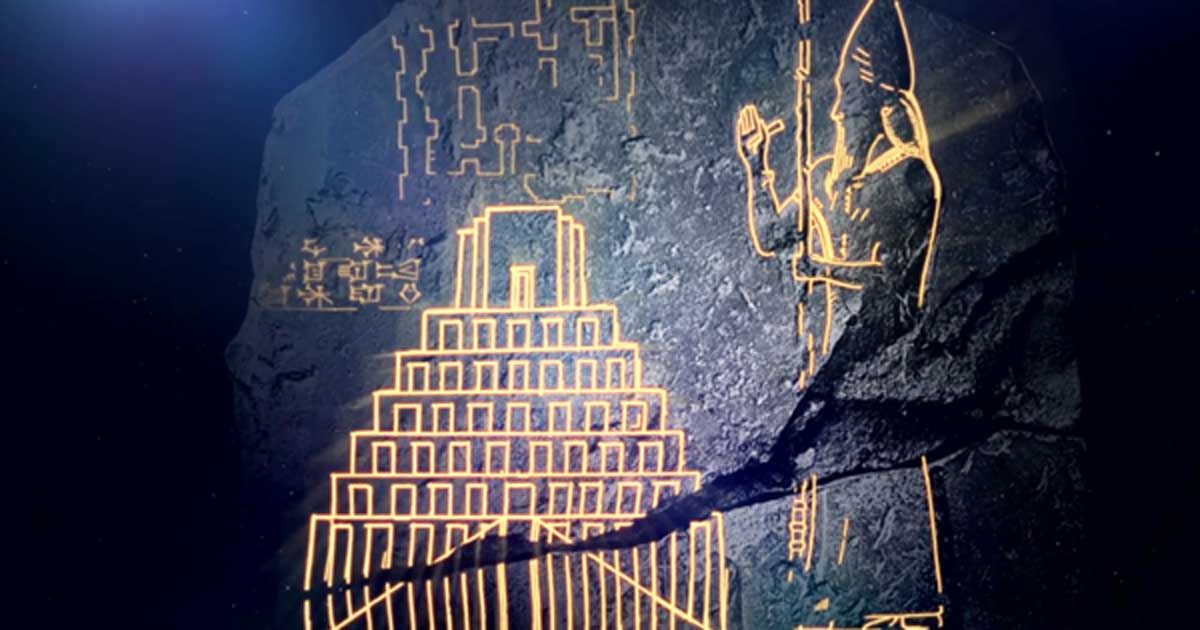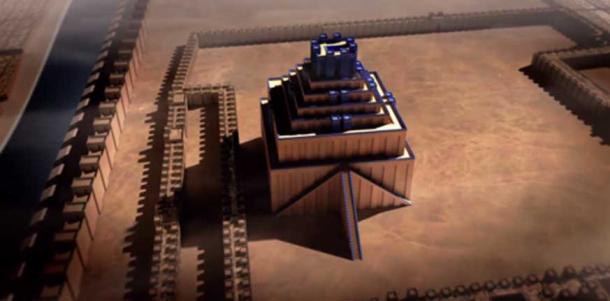In linguistics, there is a theory that there was a single, original language spoken by humankind. The Bible’s book of Genesis, Chapter 11, hews to that line too, in the passage about the tower of Babel.
Now the whole world had one language and a common speech. As people moved eastward, they found a plain in Shinar [Babylonia] and settled there.
The people decided to build a tower to the heavens to make a name for themselves and avoid being scattered around the world.
But the Lord observed this tower’s construction and thought if his people could build this with one language, they could do anything. God decided to prevent them by scattering them around the world and imposing many languages on them.
No doubt the Bible story is quite different from the linguistic theory.
But as for the tower, Andrew George, a professor of Babylonia at the University of London, thinks he has found solid evidence for it in an ancient baked tablet from the city of Babylon.
In a video on Smithsonian.org, he details his theory, and it all sounds very plausible:
The baked clay tablet that Dr. George examined, discovered a century ago in Babylon (now modern-day Iraq) and now privately held, shows what the ziggurat looked like, with its seven steps.
It shows the king with his conical hat and staff. And below is text that describes the commissioning of the tower’s construction.
“This is a very strong piece of evidence that the tower of Babel story was inspired by this real building,” Dr. George told Smithsonian.
“At the top… there is a relief depicting a step tower and… a figure of a human being carrying a staff with a conical hat on. Below that relief is a text which has been chiseled into the monument, and the label is easily read.
It reads: Etemenanki, Ziggurat Babel.
“And that means ‘the Ziggurat or Temple Tower of the City of Babylon.’ The building and its builder on the same relief,” the professor says.
The text gives an account of the people enlisted to construct the tower, as translated by Dr. George:
From the Upper Sea [Mediterranean] to the Lower Sea [Persian Gulf] the Far-Flung Lands and Teeming Peoples of the Habitations I Mobilized In Order to Construct This Ziggurat of Babylon.
The Smithsonian video says this tablet gives further proof that the tower of Babel was an actual building.
“After Darwin cast a doubt on the story of a six-day creation, people began to ask what else in the Bible might not be true,” Dr. George told Breaking Israel News.
“In the 19th century there was a discovery that the Assyrian kings described in the Bible were real and corroborated by archaeological evidence, making us ask now, how much more in the Bible is true?”
Experts had already thought King Nebuchadnezzar II actually did build a ziggurat in Babylonia after he established the city as his capital. The tablet provides more evidence.
The city of Babylon had been founded around 2300 BC about 80 miles south of present-day Baghdad. The Hittites sacked Babylon in 1595 BC, but Nebuchadnezzar began rebuilding the city in 612 BC, constructing the new edifice around an older tower.
Archaeologists think the tower of Babel was 300 feet along the sides and 300 feet tall. Only a fraction of the building remains, scattered and broken.
Read: The Forgotten Timeline of Planet Earth — Before & After the Great Flood
By Mark Miller, Ancient-Origins.net / Top image: The baked tablet that had been deciphered by Dr George. It is finely carved with a relief showing the king and tower and chiseled with text saying how people were gathered from all over to construct the ziggurat. (Smithsonian screenshot)
This article was originally published on Ancient Origins and has been republished with permission.
Source Article from http://feedproxy.google.com/~r/HumansAreFree/~3/YWq-IyhIWJ0/ancient-babylonian-tablet-provides.html
Related posts:
Views: 0
 RSS Feed
RSS Feed















 May 10th, 2017
May 10th, 2017  Awake Goy
Awake Goy 

 Posted in
Posted in  Tags:
Tags: 
















